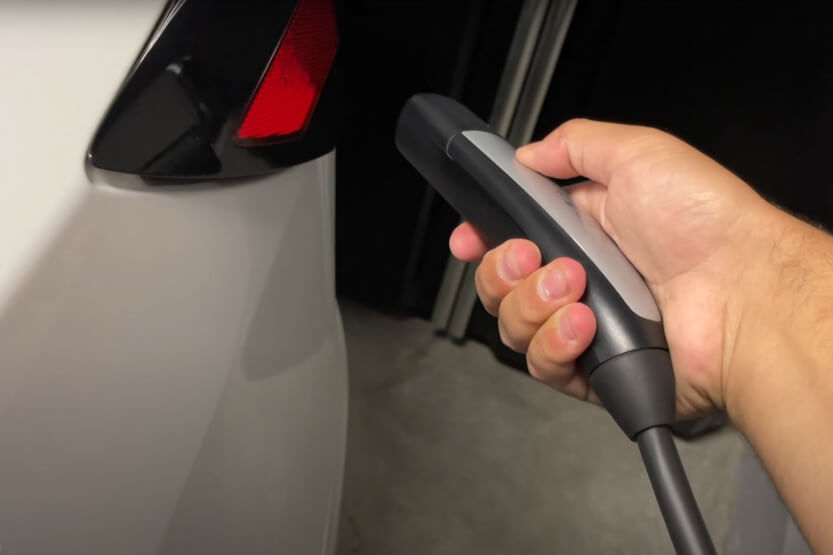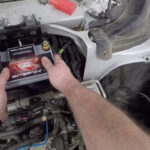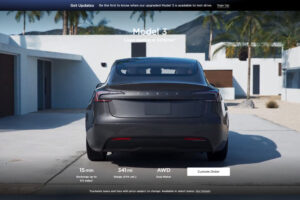Tesla is a well-known brand in the electric vehicle (EV) industry, and its charging options are just as popular. Two of the most common charging options for Tesla owners are the mobile connector and the wall connector.
While both options allow for charging, they have some key differences that may affect which one is best for a particular individual.
The Tesla mobile connector is a portable charging option that allows for charging at any location with a standard household outlet. It comes with the purchase of a Tesla vehicle and can be used with a 120-volt or 240-volt outlet.
On the other hand, the Tesla wall connector is a stationary charging option that requires professional installation and can only be used with a 240-volt outlet. It is weatherproof and can be used indoors or outdoors.
Choosing between the two options depends on several factors, including charging speed, convenience, and cost. Each option has its pros and cons, and the decision ultimately comes down to personal preference and individual circumstances.
In the following sections, we will explore the differences between the Tesla mobile connector and the wall connector, and help you make an informed decision on which one is right for you.
Understanding Tesla Charging Options

When it comes to charging a Tesla, there are two main options: the Tesla Mobile Connector and the Tesla Wall Connector. Both are charging solutions that allow Tesla owners to charge their vehicles at home, but they have some key differences.
Tesla Mobile Connector
The Tesla Mobile Connector is a portable charging solution that can be used both at home and on the go. It is compatible with multiple plug types and can provide up to 30 miles of range per hour, depending on the outlet and vehicle model.
This makes it a flexible option for those who need to charge their Tesla while traveling or away from home.
However, the Mobile Connector is less powerful and versatile than the Wall Connector.
It can only charge a Tesla vehicle up to 32 amps, the maximum amperage that most vehicles can accept when using a 240-volt outlet. Additionally, the Mobile Connector is not weatherproof and should not be used outdoors.
Tesla Wall Connector
The Tesla Wall Connector is a fixed charging solution that is designed to be installed on a wall in a garage or other location. It offers an impressive 48 amps of charging power, allowing for a charging rate of up to 44 miles per hour.
This makes it significantly faster than the standard Mobile Connector, providing Tesla owners with a convenient and time-efficient charging option.
One of the main advantages of the Wall Connector is that it is weatherproof and can be used outdoors. It is also more powerful than the Mobile Connector, offering faster charging speeds and the ability to charge a Tesla vehicle up to 80 amps with a high-amperage circuit breaker.
Overall, the choice between the Mobile Connector and the Wall Connector depends on the individual needs of the Tesla owner.
Those who need a flexible charging option for travel or on-the-go charging may prefer the Mobile Connector, while those who want a faster and more powerful charging solution for charging at home may prefer the Wall Connector.
Comparing Charging Speeds
When it comes to charging your Tesla vehicle, charging speed is an important factor to consider. The charging speed of the Mobile Connector and Wall Connector can vary significantly, making it crucial to choose the right one for your needs.
Charging Speed of Mobile Connector
The Tesla Mobile Connector is a versatile charging option that can be used at home or on the go. It is compatible with multiple plug types, ranging from 120V to 240V. However, the charging speed of the Mobile Connector can vary based on the outlet and vehicle model.
On average, the Mobile Connector offers up to 30 miles of range per hour. This means that it can take several hours to fully charge your Tesla vehicle using the Mobile Connector. However, it is still a convenient option for overnight charging or when you have several hours to spare.
Charging Speed of Wall Connector
The Tesla Wall Connector, on the other hand, is a more powerful charging option that can charge your vehicle significantly faster.
It offers an impressive 48 amps of charging power, which allows for a charging rate of up to 44 miles per hour. This makes it significantly faster than the standard Mobile Connector.
If you need to charge your Tesla vehicle quickly, the Wall Connector is the way to go. However, it requires professional installation and is more expensive than the Mobile Connector.
In summary, if you need a convenient and versatile charging option for overnight charging or when you have several hours to spare, the Mobile Connector is a good choice. But if you need to charge your vehicle quickly, the Wall Connector is the way to go.
Installation and Setup

When it comes to installation, both the Tesla Mobile Connector and Wall Connector require some setup. However, the process differs between the two devices.
Mobile Connector Installation
The Tesla Mobile Connector is designed to be portable and can be plugged into a variety of outlets, including the NEMA 14-50 plug commonly found in RV parks and campgrounds. To use the Mobile Connector, simply plug it into the outlet and then plug the other end into your Tesla vehicle.
Wall Connector Installation
The Tesla Wall Connector, on the other hand, requires professional installation. Before installation, it is important to determine whether you want to hardwire the Wall Connector or use a plug.
If you choose to hardwire the Wall Connector, it will require a dedicated circuit and must be installed by a licensed electrician. If you choose to use a plug, you will need to purchase a NEMA 14-50 plug separately.
The cost of installation for the Wall Connector varies depending on the complexity of the installation and whether you choose to hardwire or use a plug. According to Tesla, the cost of professional installation typically ranges from $1,000 to $1,500.
It is important to note that while the Mobile Connector can be used with any standard outlet, the Wall Connector requires a dedicated circuit and should only be installed by a licensed electrician.
Cost Analysis
When it comes to choosing between the Tesla Mobile Connector and the Wall Connector, cost is one of the most important factors that people consider. This section will provide a breakdown of the prices of both connectors.
Price of Mobile Connector
The Tesla Mobile Connector is the more cost-effective option of the two. It comes standard with every Tesla vehicle and can be used with a standard household outlet.
This means that there is no need for professional installation, which can save a significant amount of money. The Mobile Connector can also be used with a 240 V outlet, but this may require professional installation.
If you need to purchase a new Mobile Connector separately, it will cost you $300. This is significantly less expensive than the Wall Connector.
Price of Wall Connector
The Tesla Wall Connector is the more expensive option of the two. It is designed for home charging and provides faster charging speeds than the Mobile Connector. The Wall Connector can be installed indoors or outdoors and can be used with a 240 V outlet.
The cost of the Wall Connector varies depending on the installation method. If you already have an existing 240 V outlet, you can purchase the Wall Connector for $500 and install it yourself.
If you need to have a new outlet installed, the cost can range from $1,000 to $2,000 or more, depending on the complexity of the installation.
Overall, the Mobile Connector is the more cost-effective option for most people. However, if you need faster charging speeds and have the budget for professional installation, the Wall Connector may be a better option.
Convenience and Flexibility
When it comes to convenience and flexibility, the Tesla Mobile Connector and Wall Connector have their respective pros and cons. Let’s take a closer look at each of them.
Portability of Mobile Connector
One of the biggest advantages of the Tesla Mobile Connector is its portability. As the name suggests, it is designed to be portable and can be easily carried around.
This makes it an ideal choice for Tesla owners who are always on the go and need to charge their vehicles on the road. The Mobile Connector comes with a storage bag which makes it easy to carry around and store.
Fixed Position of Wall Connector
On the other hand, the Tesla Wall Connector is designed to be fixed in one position. This means that once it is installed, it cannot be moved around. This lack of portability can be a disadvantage for those who need to charge their vehicles at different locations.
However, the Wall Connector is an ideal choice for those who have a dedicated parking spot for their Tesla and need a permanent charging solution.
In terms of flexibility, the Tesla Mobile Connector is more versatile than the Wall Connector. The Mobile Connector comes with adapters for different outlets, which means that it can be used with different types of electrical outlets.
This makes it a more flexible option for Tesla owners who travel frequently and need to charge their vehicles in different locations.
Overall, when it comes to convenience and flexibility, both the Tesla Mobile Connector and Wall Connector have their own advantages and disadvantages.
The Mobile Connector is more portable and flexible, while the Wall Connector is a more permanent and dedicated charging solution. It ultimately comes down to the individual needs and preferences of the Tesla owner.
Electrical Requirements

When it comes to choosing between the Tesla Wall Connector and Mobile Connector, one of the most important considerations is the electrical requirements of each device.
Outlet and Adapter Compatibility
The Tesla Wall Connector requires a hardwired installation and is designed to be connected to a 240V power outlet. It is compatible with the NEMA 14-50 outlet, which is commonly used for electric vehicle charging.
However, the Wall Connector does not come with an adapter for other outlets, so it is important to ensure that the appropriate outlet is available before purchasing this device.
On the other hand, the Tesla Mobile Connector is more versatile when it comes to outlet compatibility. It comes with adapters for both NEMA 5-15 and NEMA 14-50 outlets, so it can be used with both standard 120V power outlets and 240V outlets.
This makes it a more convenient option for those who may need to charge their Tesla in different locations or who do not have access to a dedicated charging station.
Circuit Breaker Considerations
Another important consideration when choosing between the Tesla Wall Connector and Mobile Connector is the circuit breaker requirements.
The Wall Connector requires a dedicated 60-amp circuit breaker, while the Mobile Connector requires a dedicated 40-amp circuit breaker for 240V charging. For 120V charging, the Mobile Connector can be used with a standard 15-amp circuit breaker.
It is important to ensure that the circuit breaker is properly sized for the device being used to avoid any potential safety hazards. It is also recommended to have a licensed electrician install the device to ensure that it is installed correctly and safely.
In summary, the Tesla Wall Connector and Mobile Connector have different electrical requirements that should be considered when choosing between the two devices.
The Wall Connector requires a hardwired installation and a dedicated 60-amp circuit breaker, while the Mobile Connector is more versatile in terms of outlet compatibility and requires a dedicated 40-amp circuit breaker for 240V charging.
Additional Features and Considerations
Smart Charging with App Integration
Both the Tesla Mobile Connector and Wall Connector come with smart charging features that allow owners to monitor and control their charging sessions from their smartphones using the Tesla app.
With the app, users can start and stop charging, set charging schedules, and view real-time charging data. The Tesla app also offers firmware updates and remote diagnostics access, allowing for easy maintenance and troubleshooting.
The Tesla Wall Connector has an additional feature that allows owners to customize the power output of the charger, making it more versatile for different charging needs.
However, this feature requires professional installation, which can be more expensive than the plug-and-play Tesla Mobile Connector.
Long-Term Durability and Warranty
When it comes to long-term durability, both the Tesla Mobile Connector and Wall Connector are built to last. They are made with high-quality materials and are weather-resistant, making them suitable for outdoor use.
The Wall Connector is also rated for higher power output, making it a better choice for owners with higher charging needs.
Tesla offers a four-year warranty on both the Mobile Connector and Wall Connector, providing peace of mind for owners. In the unlikely event that something goes wrong with the charger, Tesla will replace it free of charge.
Overall, both the Mobile Connector and Wall Connector are reliable and durable charging solutions that offer smart charging features and a solid warranty.
Practical Usage Scenarios
Home Charging Infrastructure
When it comes to home charging, both the Tesla Wall Connector and Mobile Connector are great options.
The Wall Connector is a more permanent solution that requires professional installation, while the Mobile Connector is a more flexible and portable option that can be plugged into a variety of outlets.
The Wall Connector is ideal for those who want a dedicated charging station at home. It offers faster charging speeds compared to the Mobile Connector, and can be configured to work with a variety of circuit breakers.
It also comes with a longer cable, which can be useful for those with larger garages or outdoor charging setups.
On the other hand, the Mobile Connector is a great option for those who want to charge their Tesla at home but don’t want to invest in a dedicated charging station.
It can be plugged into a standard household outlet, which makes it a more affordable option for those on a budget. However, it’s important to note that the charging speeds will be slower compared to the Wall Connector.
On-the-Go and Road Trips
When it comes to charging on-the-go and during road trips, the Tesla Mobile Connector is the clear winner. It’s portable and can be easily packed in the trunk of your Tesla, which makes it a great option for those who want to charge their car while traveling.
The Mobile Connector also comes with a longer cable, which can be useful when charging at public charging stations. However, it’s important to note that not all public charging stations are compatible with the Mobile Connector, so it’s important to check for compatibility before you hit the road.
The Tesla Wall Connector, on the other hand, is not designed for on-the-go charging. It’s a more permanent solution that requires professional installation, which makes it less flexible compared to the Mobile Connector.
However, if you plan on taking longer road trips and need a faster charging solution, the Wall Connector may be a better option. It can be installed at your destination, which means you can start charging as soon as you arrive.
In Closing
When it comes to choosing between the Tesla Mobile Connector and the Wall Connector, it ultimately depends on the individual’s charging needs and preferences.
The Mobile Connector is a great option for those who need flexibility in charging locations and want to avoid the upfront cost of professional installation.
However, it is important to note that frequent use of high-power outlets can strain them over time, and the charging speed is slower compared to the Wall Connector.
On the other hand, the Wall Connector offers faster charging speeds and is a more permanent and reliable solution for those who have a dedicated charging location. It also has the added convenience of being able to schedule charging times through the Tesla mobile app.
It is important to consider the cost, charging speed, and convenience when making a decision between the two connectors.
Both the Mobile Connector and Wall Connector have their advantages and disadvantages, and the decision ultimately comes down to the individual’s specific needs and preferences.
Overall, Tesla owners can rest assured that they have reliable and efficient charging options available to them, whether they choose the Mobile Connector or the Wall Connector.

![Thule Vs Yakima [Which to Choose for a Bike Rack or Roof Box?] Thule Vs Yakima](https://roadsumo.com/wp-content/uploads/2021/05/Thule-vs-Yakima-150x150.jpg)







